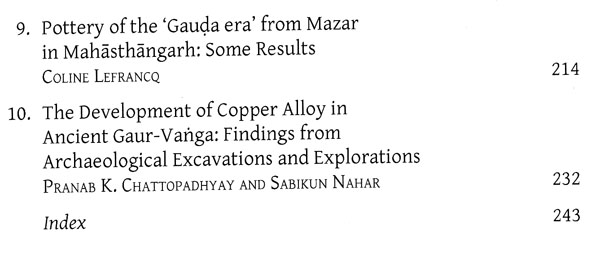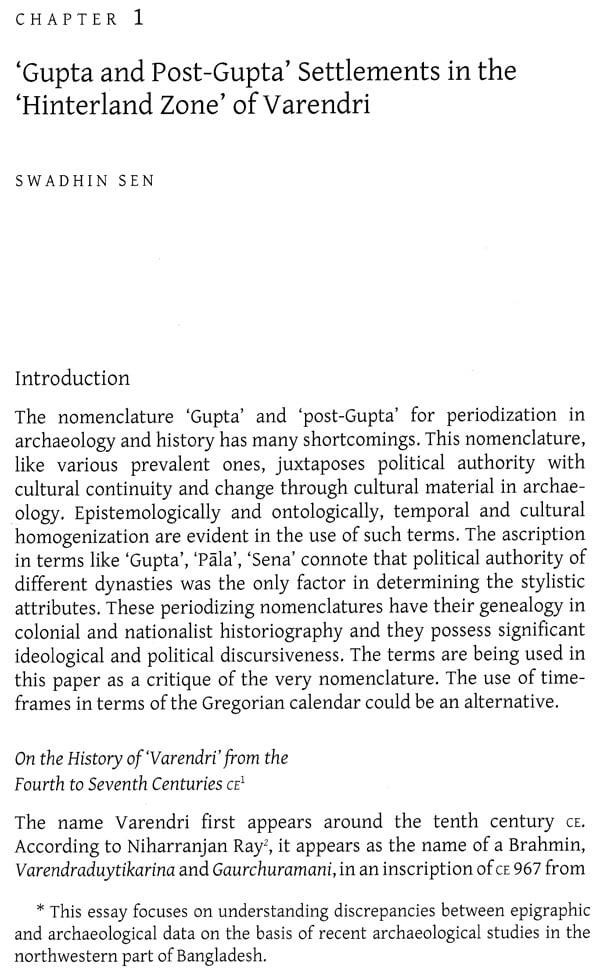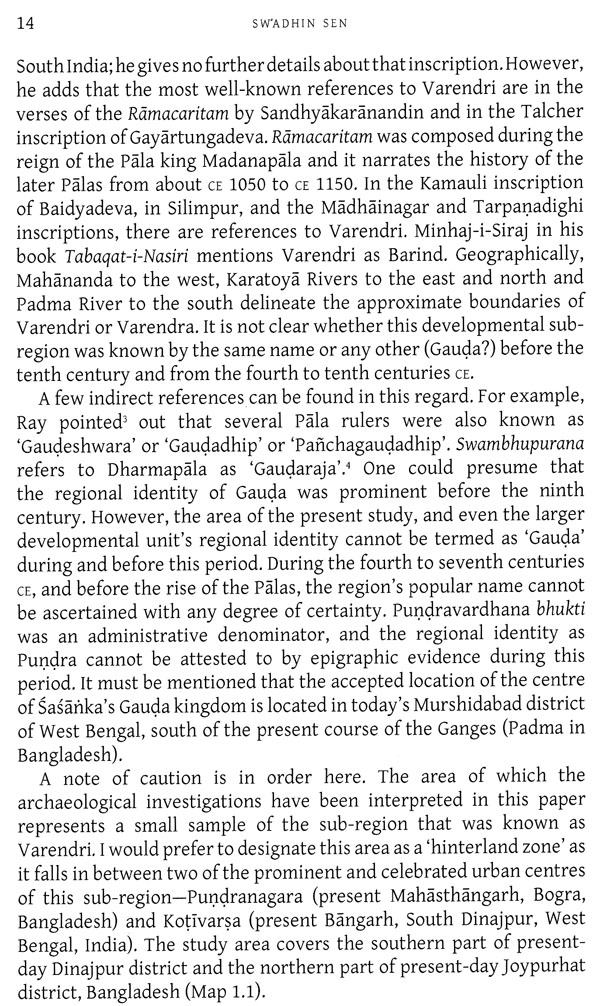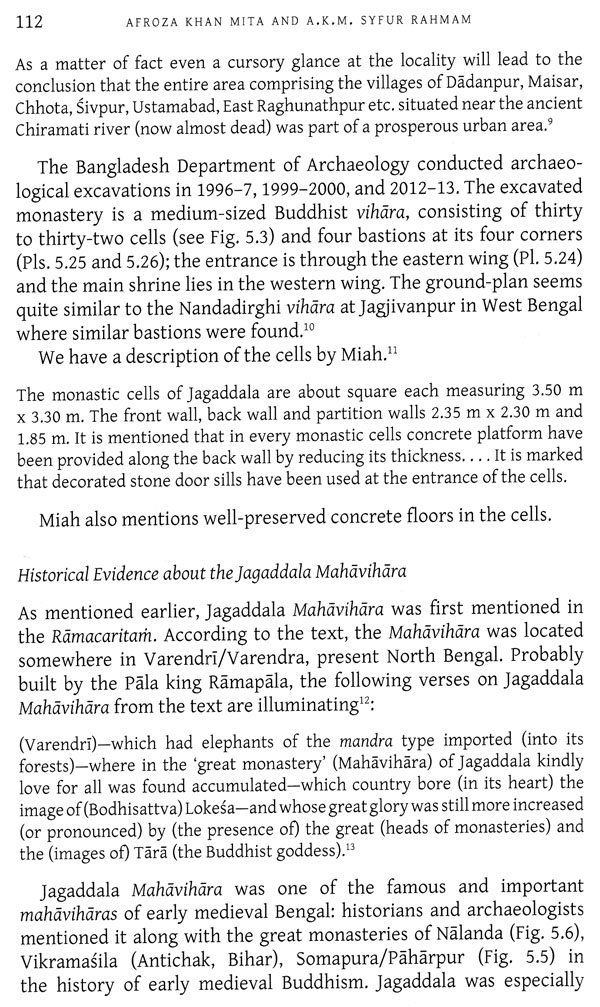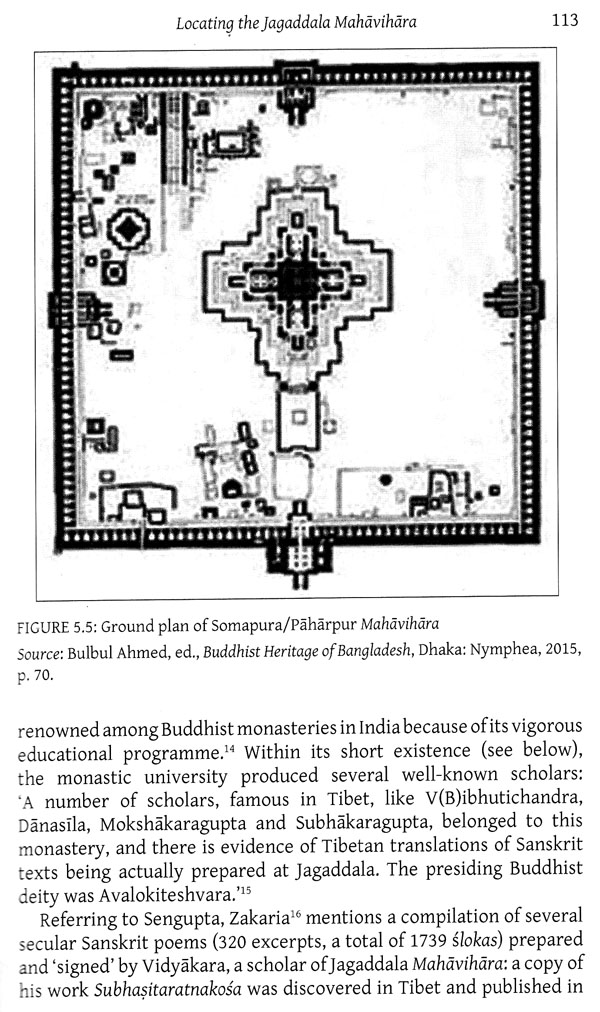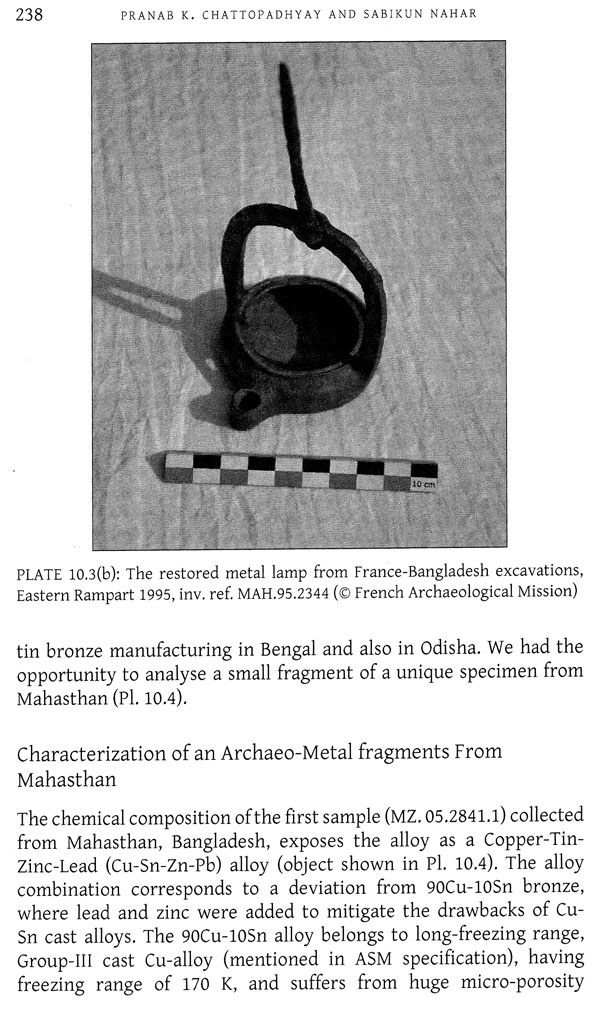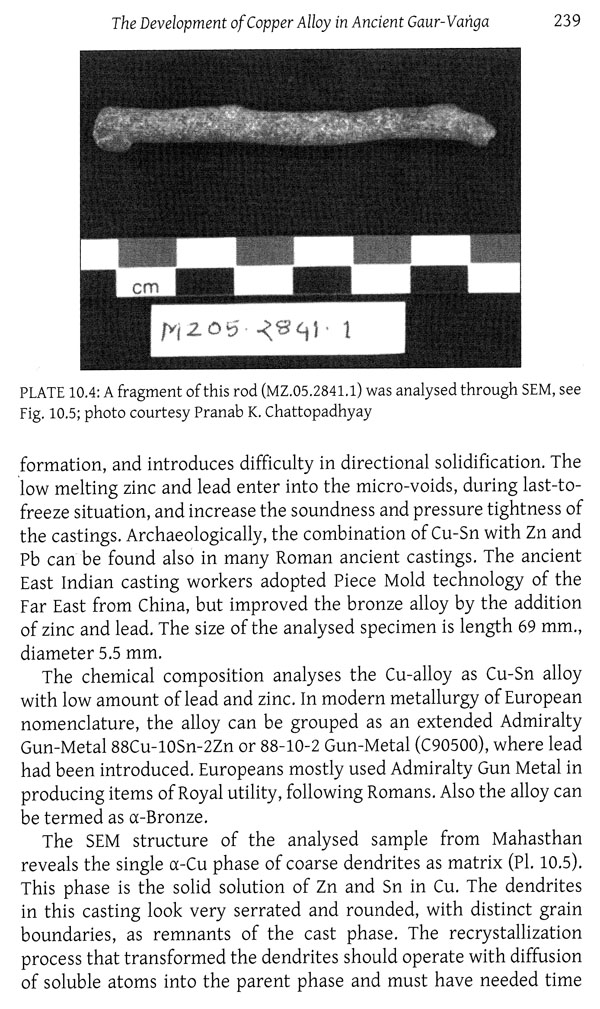About the Book In the late sixth century CE, Sasanka-raised as the king of Gauda-extended his power over Magadha and northern Bihar. Whatever the details of his reign, his kingdom is acknowledged by modern-day historians as the prime political unity of Bengal, which included part of eastern India. His reign was not long (c.590-625?), but it was a period of relative peace and good administration and we know that his kingdom was visited by the Chinese monk Xuanzang.
The century following 8aSanka's death stands as an obscure period of the Bengal-Magadha region-matsyanyayam-with a succession of local conflicts and a multiplicity of independent sovereignities as well as a few invasions from outside. A noticeable event is Yasovarman's conquest of Kanauj, celebrated in the poem `Gaudavaho', with two lines that possibly refer to the 'slaughter' of the king of Magadha, vassal of Gauda. The period of darkness came to an end in c.750 with the rise of the Palas.
Sources on the Gauda Period in Bengal: Essays in Archaeology deals with the history and archaeology of Gauda, especially inscriptions, literary sources, sculptures, ceramics, and regional organizations of the period.
About the Author Now retired, Jean-Francois Salles was Directeur de Recherche in the French National Council for Scientific Research (CNRS) until 2010. His Archaeological career spanned the Near East (Cyprus, Syria, and Jordan), to the Persian Gulf (Bahrain and Kuwait). From 1993 to 2013, he was in charge of a research project and archeological excavations at mahasthan (Bogra district) in Bangladesh (Mahasthan I, 2007); Mahasthan II, 2015). He has contributed chapters to several Indian publication.
Foreword This volume comprises of papers presented at a seminar organized by the Institut de Chandernagore; the Indian Museum, Kolkata; and the Franco-Bangladeshi archaeological Mission, from 18 to 19 February 2013 in Chandernagore. A part of the seminar series initiated by Professor Rila Mukherjee, Director of the Institute, at the instance of Dr Jean-Francois Salles, former Director of the France-Bangladesh Joint Venture excavations at Mahasthangarh (Bangladesh), it was hosted on the first day by the Indian Museum. We wish to express our sincere gratitude to Mr Anup Kumar Matilal, the then Director of the Indian Museum; and to our friend Dr Sayan Bhattacharya, and Education Officer, who coordinated this collaboration. We would also like to acknowledge the dedication and tireless efforts of Professor Mukherjee towards the preparation of this meeting, assisted by the institute's staff.
We were honoured by the presence of Mr Matilal, Director of the Indian Museum; and Mr Fabrice Etienne, Hon'ble Consul General of France in Kolkata as chief guest at the inaugural session held. It was also a great pleasure to welcome Dr Gautam Sengupta, former Director-General of the Archaeological Survey of India, and previously Director of Archaeology and Museums, West Bengal, who delivered an illuminating keynote address 'Locating and Situating Galicia in a Historical Context'. At the end of the sessions, Dr Sutapa Sinha from the Department of Islamic Culture and History, University of Calcutta, made a brilliant presentation about her latest research and publications on the city of Gaur. We are also extremely grateful to Mr Etienne for the reception hosted by the French Consulate in the evening.
Focusing on 'undivided' Bengal, West Bengal and Bangladesh, the seminar was intended to bring together scholars specializing in ancient history, art and archaeology of the region. Five papers were read by Indian scholars.
Introduction Modern historians do not think much of the concept of the Dark Ages, applied to the middle Ages in opposition to the Renaissance. The 'Dark Ages gained legitimacy as a 'historical' period in the late eighteenth century when Edward Gibbon published his Decline and Fall of the Roman Empire (1776 sq.);1 although Gibbon's discourse has been unanimously rejected by historians, some of his ideas have witnessed a revival at times. The term 'Dark Ages' was used to designate the European Early Middle Ages (c. fifth to eleventh century ce) right through the nineteenth and early twentieth centuries, until the coming of the French Ecole des Annales and similar historical streams in Europe (`Cultural History' in England). The term was used to describe periods of political instability, wars and conflicts (sometimes invasions), of chaos in central power, of poor economic activity, lack of social welfare and narrowness of religious, cultural and artistic life-such statements were mainly based on the scarce sources available, both textual and material, or, what was rediscovered later, on misinterpretations of the available data.
The 'Dark Ages' is not a common term in historiography in India, but we do sometimes find it along with other readings; I happened to come across it in material associated with the Gauda period. Gaud& as an entity-or political space-comes into being in the sixth century CE even though we do find earlier references to the Gaudas.3 In the sixth century, Varahamihira's Brihat Samhita cites the presence of the tribe Gaudakas in the eastern regions together with the Paurjdras and Tamraliptakas4-the date of the text is uncertain although the author was alive for more than seventy-five years.
Book's Contents and Sample Pages

